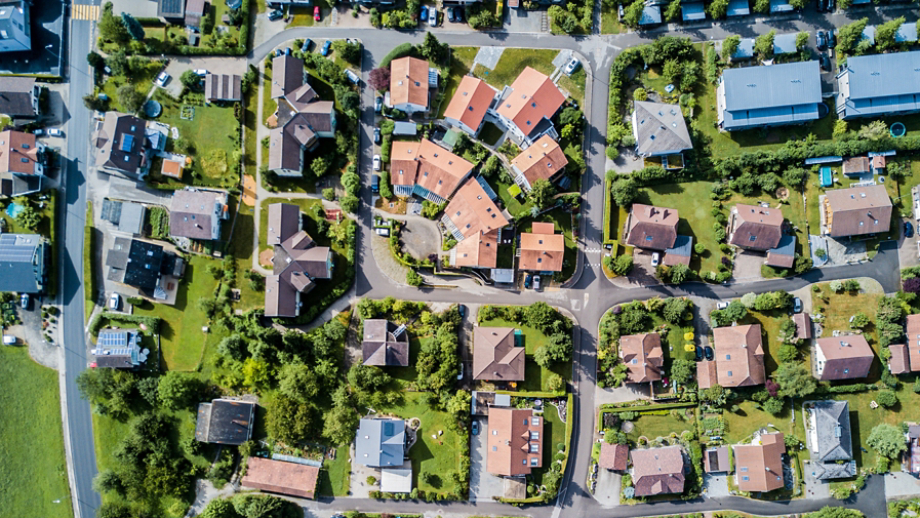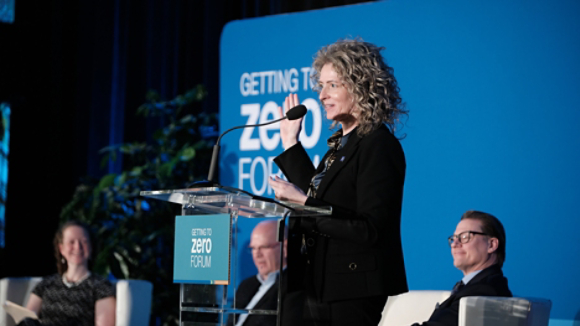January 19, 2024
Homes of the Future: Getting More Comfortable with Artificial Intelligence
Innovators across multiple industries are using artificial intelligence to help systems operate smarter and more efficiently. What does this mean for the future of sustainable homes? Joel Gouker, director of innovation at Trane Technologies, explains.

As a self-labeled “intrapreneur,” I’m always looking to bring new opportunities and technologies into our enterprise. At Trane Technologies, our priorities for new innovative strategies are always twofold: to better meet our customers’ needs and to support our bold sustainability commitments.
Most of us have experience with climate control. Our heating and air conditioning systems monitor the indoor air temperature, and then heat or cool the home to meet our preferred, scheduled temperature. This system tries to maintain the homeowner's comfort while balancing energy costs. But temperature is only one part of the indoor climate. Humidity, for example, can have a significant impact on the way we experience our environment, especially as it impacts our sense of smell. And we know that air quality is highly important for our overall health. As climate control technology has gotten more sophisticated, our systems can now measure and respond to more indicators like humidity. By and large, these systems do a good job of making decisions based on the information that they have about what's going on in the home at that time. But advances in artificial intelligence (AI) will allow our climate control systems to work even smarter.
Artificial intelligence and the future of climate control
Intuitively, we know that what goes on outside of the house changes what happens inside the house. If it’s a bright, sunny day or a cold, rainy day, this is going to change how it feels inside. But other external air quality factors like cloud cover, ultraviolet radiation indexes, particulate matter and wildfire smoke also impact internal comfort and air quality. And at Trane Technologies, we have done a lot of work in understanding the correlation between these external air quality factors and internal comfort and air quality.
AI is very good at looking at a wide range of different data sources and types, enabling us to fully leverage many different sources of information, such as present conditions, historical patterns and future predictions. In the future, we may have a different way of interacting with our air conditioning and heating systems in order to explain our goals. Instead of having to program something into the system, we may be able to engage in a more conversational style, explaining how we feel or why we aren’t comfortable. And then the systems will be able to self-program to meet our goals, even if they aren’t explained in engineering terms or rigid formats.
Advances in AI will allow our climate control systems to work even smarter.

We're already applying some of this technology in the commercial space. Trane® Autonomous Control powered by BrainBox AI® uses AI to automatically identify and self-program system optimization. An enhancement to existing Trane Tracer® SC+ systems, it’s a cloud-based service that requires no additional hardware. Because we have such strong engineering expertise across different businesses, we can leverage that strength and launch new technologies in one business, then adapt them into different businesses as we learn more.
Imagining our future homes and investing in them now
We often think about sustainability in terms of emissions reductions, and it's more than that. Sustainability also impacts how we think about and invest in products that can adapt to continued advances in technology—because the pace of innovation is increasing rapidly. As we’re designing solutions, we’re also considering the flexibility and future possibilities within each product. That kind of thinking isn’t just important for manufacturers and designers in the industry, it’s also important for homeowners.
When we’re thinking about what kind of system to bring into our homes, we need to think about what we want it to be able to do in the future. Many of the newest capabilities and upgrades in climate tech could be software-based upgrades. So new features aren’t necessarily limited to when we buy a new HVAC system. A system that you buy today may still be the one you have in 2040. The impacts of the decisions that we make now impact the possibilities for our future – and how we experience that future, especially as we consider the durable goods that we interact with and that we will have in our homes for a long time.
Topic Tags

 English
English





















